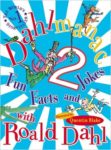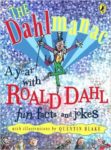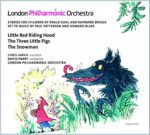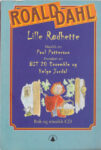Sections: Information | Plot Description
Information
- First published:
- December 24, 1988 issue of Telegraph Weekend Magazine
- Dahl wrote the first section of this story. The other parts were written by Ted Willis, Ruth Rendell, and Peter Levi
- Illustrated by: Colin Hadley
- Recent news:
- Two brand new Dahl short stories added! - June 26, 2016
- Magazine publications:
Plot Description
This is a curious story, and I’m still not sure what to make of it. Is the narrator actually guilty? What’s the point of the onions? I wonder if it’s due to the four-author structure — was the story planned or did each author simply build on that had been written previously? What do you think?
Spoiler warning!
[Dahl’s portion:] The narrator is a secretary in a London office, and he (we find out later it’s a man) describes his daily walk through Kensington Square. He’s fascinated by the view he gets through the windows and inside the homes of the wealthy upper-class. He relates a story of an elderly Duke who, while visiting the narrator’s office as a client, broke wind in a spectacular fashion. The wealthy, he concludes, simply don’t care what the rest of the world see or think of them. He then kicks off the plot: one night while walking home, he notices a change at one of the homes on the square. Instead of the usual living room, he sees a bed with a strange elderly man with white hair and the black-haired lady of the house looking down at him. Later that night, he continues to obsess over how unusual this was and heads back to confirm what he saw. He is surprised to see that the bed and old man are gone, and the living room is back in place. As he watches, the black-haired lady appears in the window and glares at him as she draw the curtains.
[Ted Willis’s portion:] The narrator argues that he has never been prone to over-imagination, and he would have dismissed the whole situation except for the look the lady gave him: “a look of such malevolence and smouldering hatred that I had shivered.” Next he describes a visit from Carol, a casual girlfriend. He relates the story to Carol and she rationalises it while chiding him about his job and lack of ambition. When she leaves later that night, he walks her to her car. Curiosity drives him back to the Square one more time to look at the house. Suddenly the living room window curtains burst open and the old man appears pressed against the glass, his arms outstretched with a look of despair upon his face. The black-haired lady pulls the old man back violently and shuts the curtains. The narrator turns to go but is violently attacked. He catches a glimpse of a man with a ginger-coloured beard and smells the pungent odour of onions before he is hit over the head and slips into unconsciousness.
[Ruth Rendell’s portion:] The narrator awakens in the hospital and is surprised at the lack of police interest in the attack. When he describes his assailant to a constable, the constable says it sounds like Sir George Bentley: “It was him picked you up and brought you here.” The narrator concludes that someone else must’ve hit him, and Sir George is simply the last person he saw before he lost consciousness. Once he’s released from the hospital, he decides to go to the mysterious house to thank Sir George (and also assuage his curiosity). He finds the windows open and the lights on, and when no one answers the bell, he discovers that the front door isn’t locked. He goes inside and discovers that it looks like everyone ran out suddenly: the television is still on; a cigarette is still smouldering; food was half-eaten on the dining table. He wanders around and finds a string of “very pungent Spanish onions” lying on the kitchen counter. Then he goes upstairs. He discovers the bed he saw before, but this time the black-haired woman is lying in it, dead from a bullet wound in her forehead.
[Peter Levi’s portion:] The narrator finds a revolver near the bedside and examines it, then feels sick and nearly faints. He hears steps on the landing as the ginger-haired man calls out, “I can’t find him anywhere. He’s nowhere in the Square. He must still be in the house. Darling? Where are darling?” The narrator finally confronts the man and confesses that he found the lady dead. The man is overcome with grief at the sight of her. The police come, and they all go upstairs to the bedroom. As soon as the man goes inside, there is another gun shot and he falls dead on top of her. The police decide it’s a murder-suicide, and eventually they clear the narrator of any involvement. The official story is that the couple were actually the butler and housekeeper for a wealthy old man, and they kept him prisoner and stole his money. The old man must’ve hidden one day, leading the butler to go out looking for him. Meanwhile the old man shot the woman and then escaped, never to be seen again. The only lingering question for the narrator is why he’d been hit on the head. He decides that the smell of onions may have just been due to the violent blow on the head. “I’ve always mean to ask a specialist about it, but one thing leads to another, and I hate telling this story. That’s why I’m writing it down, to get rid of it. It’s nearly Christmas now as a matter of fact.”













